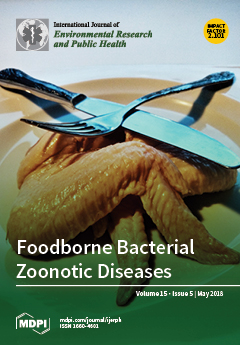Pollutants from pig farms in Mexico have caused problems in many surface water reservoirs. Growing concern has driven the search for low-cost wastewater treatment solutions. The objective of this research was to evaluate the potential of an in-series constructed wetland to remove nutrients from wastewater from a pig farm. The wetland system had a horizontal flow that consisted of three cells, the first a surface water wetland, the second a sedimentation cell, and the third a subsurface flow wetland. The vegetation used was
Thypa sp. and
Scirpus sp. A mix of soil with red volcanic rock (10–30 mm diameter) and yellow sand (2–8 mm diameter) was used as a substrate for the vegetation. The experiments were carried out in duplicate. Water samples were collected at the inflow and outflow of the cells. Two hydraulic retention times (HRT) (5 and 10 days) and three treatments were evaluated: 400, 800, and 1200 mg·L
−1 of chemical oxygen demand (COD) concentration. Data was collected in situ for temperature, pH, dissolved oxygen (DO), electrical conductivity (EC), and total dissolved solids (TDS). COD, total Kjeldahl nitrogen (TKN), ammonia nitrogen (NH
3–N), and total phosphorous (TP) were analyzed in the laboratory. The results showed that the in-series constructed wetland is a feasible system for nutrient pollutant removal, with COD removal efficiency of 76% and 80% mg·L
−1 for a 5- and 10-day HRT, respectively. The removal efficiency for TKN, NH
3–N, and TP reached about 70% with a 5-day HRT, while a removal of 85% was obtained with a 10-day HRT. The wetland reached the maximum removal efficiency with a 10-day HRT and an inflow load of 400 mg·L
−1 of organic matter. The results indicate that HRT positively affects removal efficiency of COD and TDS. On the other hand, the HRT was not the determining factor for TP removal. Treatment one, with an initial COD concentration of 400 mg·L
−1, had the highest removal of the assessed pollutants, allowing for the use of water for irrigation according to Mexican regulatory standards (NOM-001). The water quality resulting from treatments two and three (T2 = 800 mg·L
−1 of COD and T3 = 1200 mg·L
−1 of COD) did not comply with minimal requirements for irrigation water.
Full article





